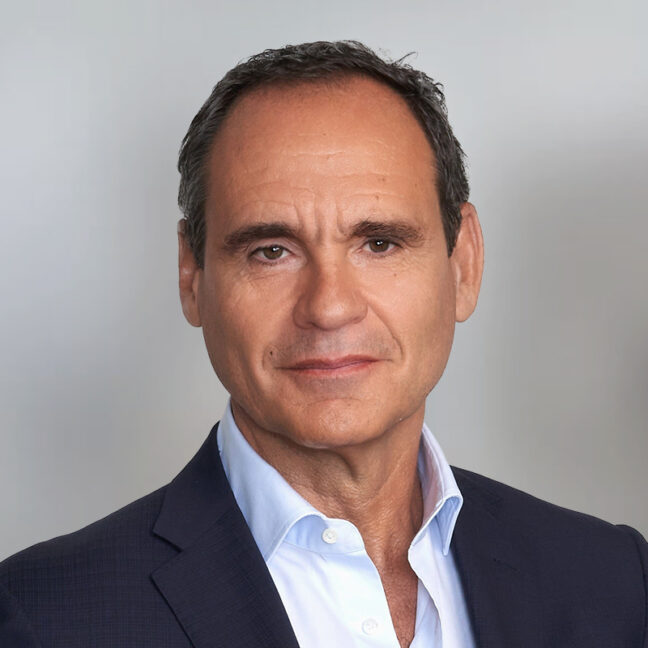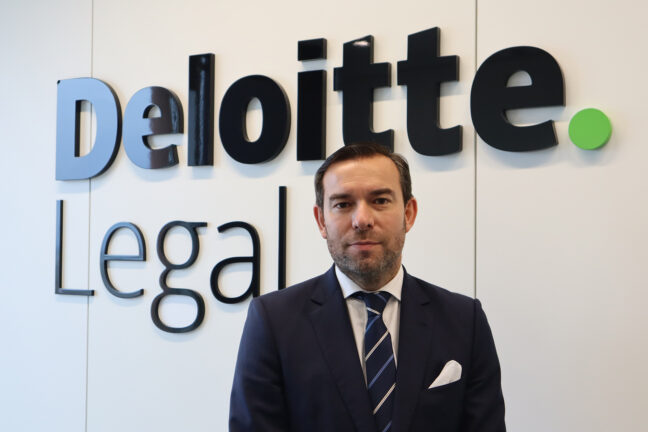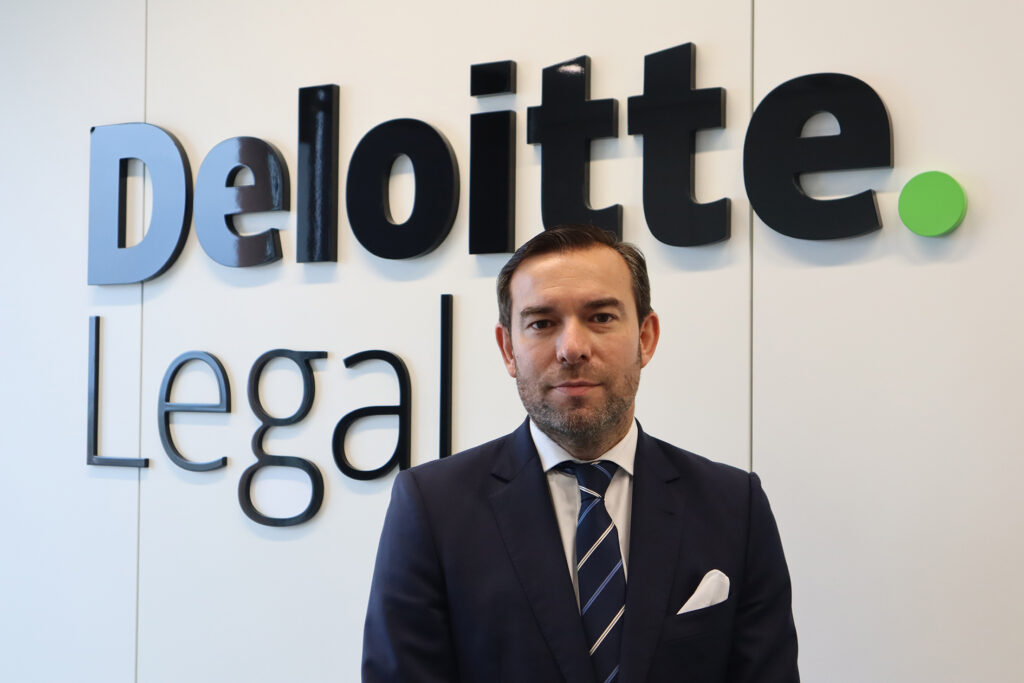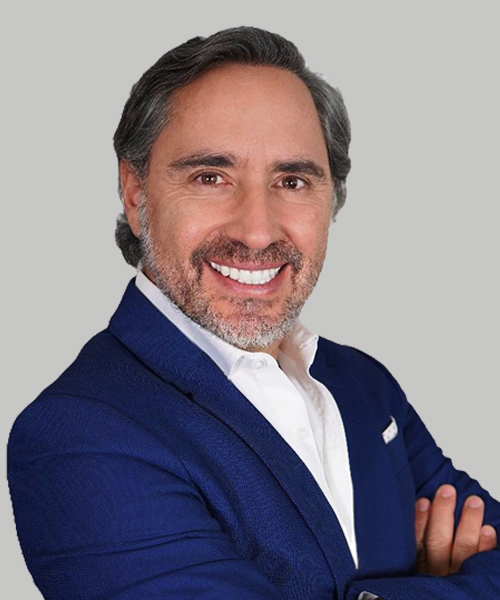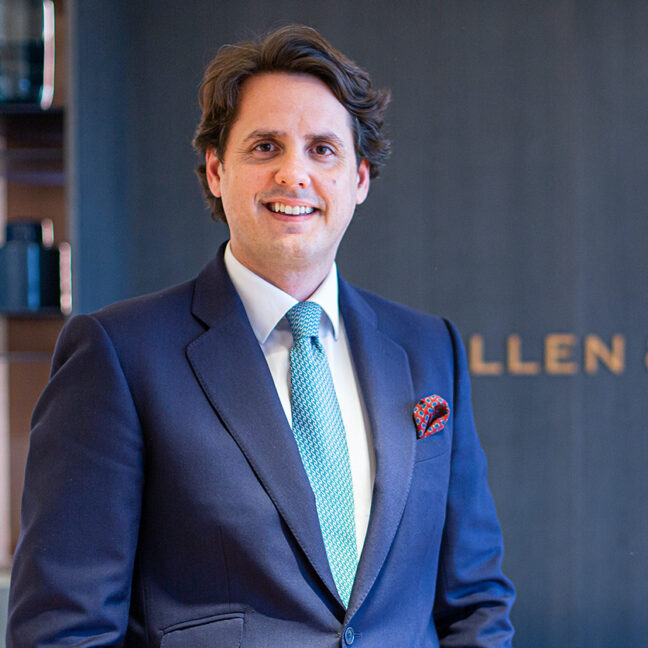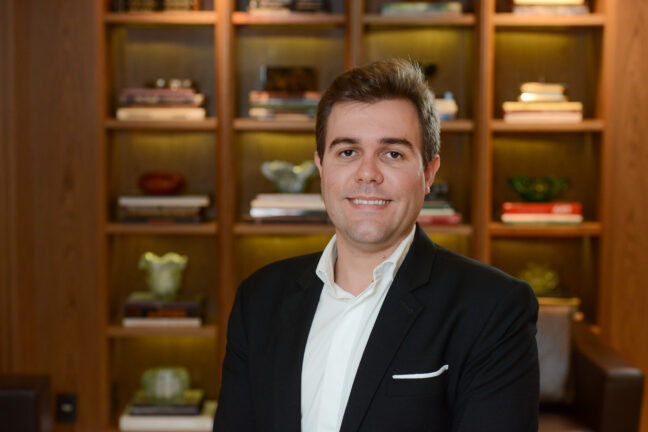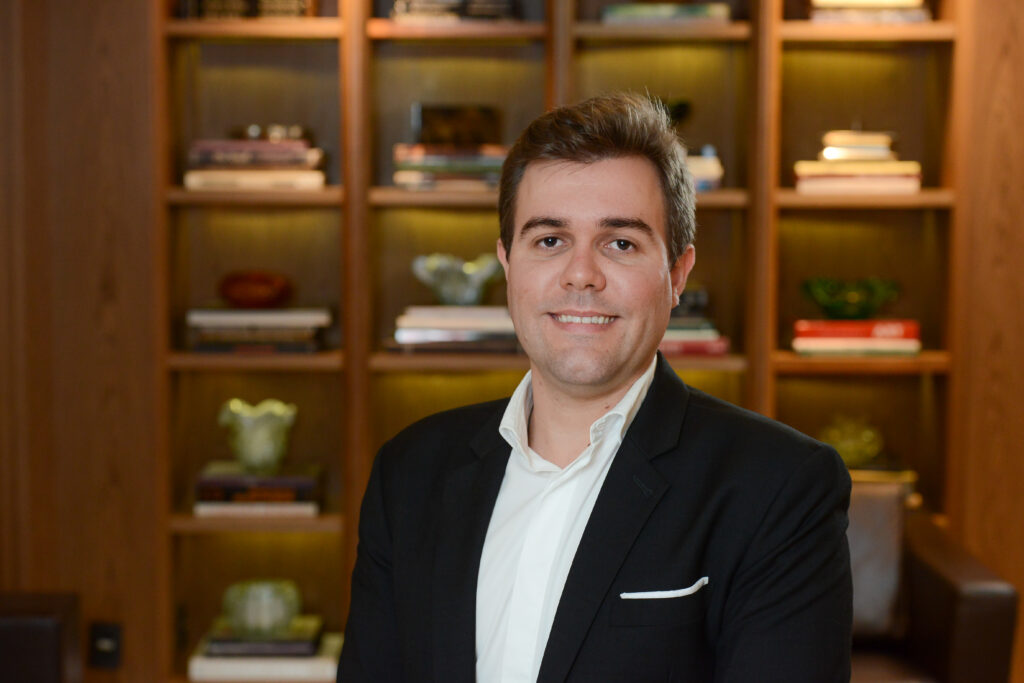Content available in English and Spanish
TTR Data Dealmaker Q&A with Clifford Chance Partner Javier Amantegui
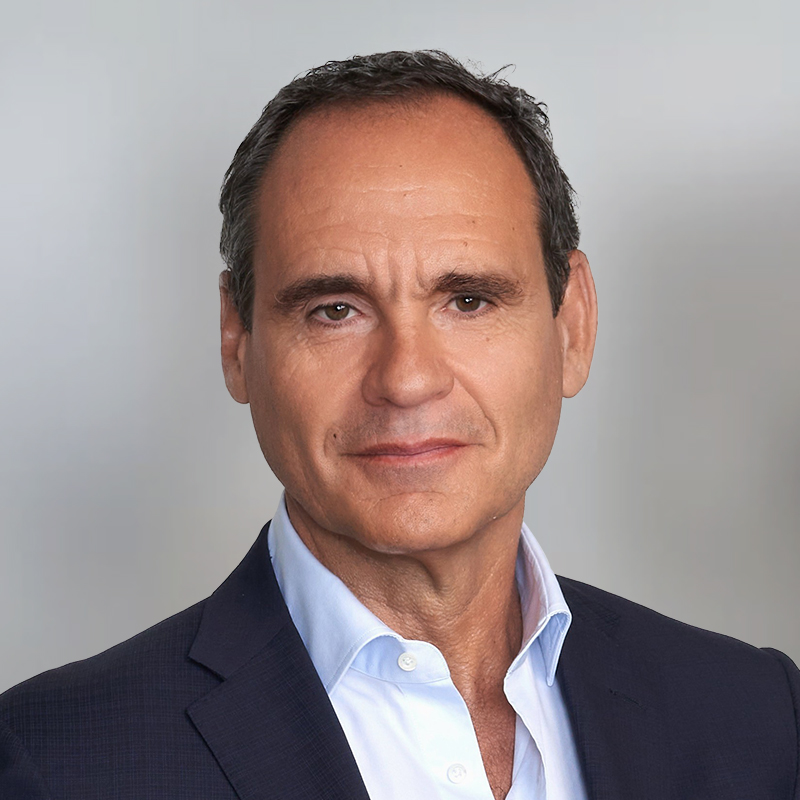
Javier Amantegui is a Partner in the Corporate / M&A department and Co-Head of the Financial Investors practice for Clifford Chance in Europe.
He specialises in cross-border M&A for international investors, including private equity, financial sector and infrastructure transactions.
Javier is ranked as a leading lawyer by the most reputable legal publications such as Chambers & Partners, Legal 500 and IFLR1000.
TTR Data: What are the most relevant drivers to consolidate the M%A market in Spain for 2024?
With Spain’s GDP growth of 2.5% in 2023 and estimated growth of 1.5% in 2024, compared to real and estimated growth in the Euro area of 0.7% and 0.6%, respectively, for the same periods, Spain will continue to be an attractive destination for investment. However, the take-off of mergers and acquisitions to higher levels than in 2023, in terms of volume and number of transactions, is likely to be delayed until the second half of the year due to interest rates and inflation. Interventionism in many sectors and in operations with listed companies, as well as the unpredictability of the regulatory framework for labour, can also hamper recovery. We are seeing better dynamics than at the end of 2023, with significantly more transactions planned and in progress, although processes will remain lengthy, thorough in terms of due diligence and somewhat volatile, and in what is a novelty, perhaps more balanced and less pro-seller in contractual terms.
TTR Data: As one of the leading M&A legal advisors in the renewable energy sector in Spain, how has Clifford Chance handled the current situation in terms of advice in this sector and what opportunities have you found in Spain in recent months?
The energy transition is the greatest challenge facing humanity in the 21st century and renewables will remain active in 2024. The firm offers the sector a 360º format service. That is, in the development, financing and construction phase of projects, as well as in their consolidation, contribution to platforms or sale. Our administrative law and project finance teams are indispensable companions in this regard, enabling the M&A practice to be a leader. We are also credible due to our wealth of experience in key areas of activity such as tariff framework, terms of construction and supply contracts, management team incentives, governance of joint-venture platforms, first-offer rights on completed projects and execution of multi-jurisdictional processes for the sale or purchase of brownfield portfolios. The international coverage of our network of offices rounds it all off and makes us the first choice for both strategic and financial incumbents. As an example, it is worth mentioning the advice given by the firm to Norges Bank Investment Management on the purchase of 49% of a 2 GW solar and wind project portfolio from Iberdrola; Ardian on the sale of ASR Wind to Naturgy; Mirova on the sale of 51% of the Goya wind project to Engie; Solarpack on the restructuring of the renewable asset portfolio held with Ardian; Grenergy on the sale of 450 MW of wind farms in Spain; Cinven on the acquisition of a majority stake in Amara NZero.
TTR Data: In which other sectors might international investors find the biggest opportunities in Spain in 2024? Why?
In addition to renewable energy, the international focus is on technology, health and digital infrastructure. Other sectors with potential are education and agribusiness, particularly their bio and sustainability facets. These are concepts that must be understood in a broad sense and can also be extended to related activities. Fundamental concession infrastructure will continue to arouse interest. We know that there are Spanish assets in these areas in capital raising or sale processes.
TTR Data: Continuing with the Private Equity and Venture Capital segment, we see that, after the boom of 2021, the emergence of unicorns is slowing down and some are disappearing. What is your evaluation for this industry in Spain in 2023? What can we foresee for 2024?
2023 has been a year of transition for financial investors in which fewer transactions have been put together due to differences in valuation expectations and rising debt prices. The widespread rise in production costs due to supply delays and inflation has also dampened business plans. We have witnessed the suspension or postponement of several sales auctions in late 2022 and early 2023, fewer and smaller bilateral transactions, thorough due diligence procedures and a general slowdown of negotiations and documentation on transactions that have been closed. The past year also presented greater difficulties in raising funds for national and international managers.
However, the industry is still there with an enormous amount of capital available for investment, the same technical ability to select the best companies, support their growth and propose a new phase of development through their sale, and a sophisticated investment base that continues to rely on their management. Therefore, in 2024 we expect a gradual return, with a greater volume and number of operations and transactions, which will be brave and imaginative, and among which growth projects, creation of platforms and exclusive negotiations on traditional auction buy-outs will predominate, increasingly involving listed companies.
TTR Data: What will Clifford Chance’s main challenges be in Spain during 2024?
In Spain there are very good offices and lawyers specialising in M&A. In the latest global edition of the leading international publishing house ranking law firms, 25 law firms and 92 lawyers have obtained the highest rankings for the M&A practice, representing more law firms and lawyers than in any other practice area ranked and gives an idea of the level of supply in this country. Our efforts continue to bear fruit and the publisher’s rankings still have us as the leading international firm.
We must continue to grow and, in order to do so, differentiate ourselves from competitors by sector intelligence, experience, access to the regulator, knowledge of cutting-edge solutions and international network coverage and rigour.
Likewise, we have to continue to attract and retain young talent, offering training, a good working environment, a career and, above all, motivating through our involvement in the most sophisticated and exciting operations. The commitment required to be part of an elite firm is not compensated by remuneration alone, which of course must be in line with market terms, but by training and the satisfaction of participating in the best projects. It is about showing a set of charms to be able to compete with the exorbitant chequebook offered in recent years by the fashionable American firms.
Finally, we have to ensure the continuity of our firm’s project in Spain. We were the first international firm to offer a top-of-the-line service in local law and we gained a reputation for solidity and long-term that must be preserved. Our prestige, extraordinary service and passion for what we do are non-negotiable and the appointment of new partners to assist in the generational transition must be consistent with this goal.
Spanish version
Javier Amantegui es socio del departamento Corporate / M&A y co-responsable de la práctica de Financial Investors de Clifford Chance en Europa.
Está especializado en fusiones y adquisiciones transfronterizas asesorando a inversores internacionales, incluyendo operaciones en el ámbito de private equity, financiero e infraestructuras.
Javier está reconocido por las publicaciones jurídicas más prestigiosas como Chambers & Partners, Legal 500 e IFLR1000.
TTR Data: ¿Cuáles son los drivers más relevantes para consolidar el mercado de M&A en España en 2024?
Con un crecimiento de PIB en España del 2,5% en 2023 y una estimación de crecimiento del 1,5% en 2024, frente al crecimiento real y estimado de la zona Euro del 0,7% y 0,6%, respectivamente para los mismos períodos, España continuará resultando un destino atractivo para la inversión. No obstante, las tasas de tipos de interés e inflación retrasarán probablemente hasta la segunda mitad del año el despegue de las fusiones y adquisiciones en volumen y número de operaciones hacia mejores niveles que en 2023. El intervencionismo en numerosos sectores y en operaciones con compañías cotizadas, así como la impredecibilidad del marco normativo laboral, pueden lastrar igualmente la recuperación. Observamos mejores dinámicas que a finales de 2023, con bastantes más transacciones en proyecto y curso, si bien los procesos seguirán siendo largos, profundos en due diligence y algo volátiles, así como, novedosamente, tal vez más equilibrados y menos pro-vendedor en términos contractuales.
TTR Data: Clifford Chance, al ser uno de los líderes en asesoría legal de M&A en el sector de energías renovables: ¿Cómo ha manejado la coyuntura actual en términos de asesoramiento en este sector y qué oportunidades ha encontrado en España en los últimos meses?
La transición energética constituye el mayor reto del siglo XXI para la humanidad y renovables continuará activo en 2024. El despacho sirve al sector con formato 360º. Es decir, tanto en la fase de desarrollo, financiación y construcción de los proyectos, como en su consolidación, aportación a plataformas o venta. Nuestros equipos de derecho administrativo y financiación de proyectos resultan un complemento indispensable a este fin para que la práctica de M&A resulte líder. Asimismo, somos creíbles por la riqueza de nuestra experiencia en ámbitos clave de la actividad tales como marco tarifario, términos de contratos de construcción y suministro, incentivos de equipos gestores, gobierno de plataformas con formato de joint-venture, derechos de primera oferta sobre proyectos terminados y ejecución de procesos multi-jurisdiccionales de compra o venta de carteras brownfield. La cobertura internacional de nuestra red de oficinas cierra el círculo y nos convierte en primera opción para incumbentes estratégicos y financieros a partes iguales. Como ejemplo, cabe mencionar el asesoramiento prestado por el despacho a Norges Bank Investment Management en la compra a Iberdrola del 49% en una cartera de proyectos solares y eólicos de 2 GW; Ardian en la venta de ASR Wind a Naturgy; Mirova en la venta a Engie del 51% del proyecto Eólico Goya; Solarpack en la reestructuración de la cartera de activos renovables ostentada junto a Ardian; Grenergy en la venta de parques fotovoltaicos con 450 MW en España; Cinven en la adquisición de una participación mayoritaria en Amara NZero.
TTR Data: ¿Cuáles serían otro de los sectores que podrían ofrecer las mayores oportunidades en España a los inversores internacionales en 2024 y por qué?
Además de energía renovable, el foco internacional se centra en tecnología, salud e infraestructura digital. Otros sectores con potencial son educación y agronegocio, particularmente en su faceta bio y de sostenibilidad. Son conceptos que deben entenderse en sentido amplio y pueden extenderse también a actividades relacionadas. Infraestructura fundamental concesional continuará despertando interés. Nos consta que existen activos españoles en estos ámbitos en procesos de búsqueda de capital o venta.
TTR Data: Continuando con el segmento de Private Equity y Venture Capital vemos que, después del ‘boom’ de 2021, el surgimiento de unicornios está disminuyendo y algunos están desapareciendo. ¿Cuál es la evaluación de estas industrias en 2023 y qué podemos esperar en 2024?
2023 ha sido un año de transición para los inversores financieros en el que se han casado menos operaciones por diferencias en expectativas de valoración y el incremento del precio de la deuda. La subida generalizada de costes de producción por retrasos en suministros e inflación ha sembrado también dudas sobre los planes de negocio. Hemos sido testigos de la suspensión o postposición de varias subastas de venta a finales de 2022 y comienzos del 2023, menos y más pequeñas operaciones bilaterales, minuciosos procedimientos de diligencia debida y ralentización general de las negociaciones y documentación en las transacciones que se han cerrado. El pasado ejercicio presentó igualmente mayores dificultades en el levantamiento de fondos por los gestores nacionales e internacionales.
No obstante, la industria sigue ahí con una enorme cantidad de capital disponible para invertir, la misma capacidad técnica para seleccionar las mejores compañías, apoyar su crecimiento y proponer una nueva fase de desarrollo mediante su venta, y una base inversora sofisticada que sigue confiando en su gestión. Por ello, en 2024 esperamos su vuelta paulatina, con mayor volumen y número de operaciones y transacciones, que serán valientes e imaginativas, y entre las que predominarán los proyectos de crecimiento, creación de plataformas y negociaciones en exclusiva sobre los tradicionales buy-outs de subasta, e involucrarán compañías cotizadas de forma creciente.
TTR Data: ¿Cuáles serán los principales retos de Clifford Chance en España durante 2024?
En España hay muy buenos despachos y abogados especializados en M&A. En la última edición global de la editorial internacional líder en valorar firmas legales, 25 despachos y 92 abogados han obtenido los más altos rankings para la práctica de M&A, lo que representa más despachos y abogados que en ninguna otra práctica revisada y proporciona una idea del nivel de la oferta en nuestro país. Nuestro esfuerzo sigue dando frutos y los rankings de la editorial nos sostienen como el despacho internacional líder.
Debemos continuar creciendo y, para ello, diferenciarnos de los competidores por inteligencia sectorial, experiencia, acceso al regulador, conocimiento de soluciones de vanguardia y cobertura y rigor de red internacional.
Asimismo, seguir atrayendo y reteniendo talento joven, ofreciendo formación, buen ambiente de trabajo, carrera profesional y, sobre todo, motivando mediante nuestra involucración en las operaciones más sofisticadas y excitantes. El compromiso que requiere formar parte de una firma de élite no se compensa solo con retribución, que por descontado debe satisfacerse en términos de mercado, sino con el entrenamiento y satisfacción de participar en los mejores proyectos. Se trata de mostrar un conjunto de encantos para poder competir con la exorbitada chequera ofrecida en los últimos años por las firmas americanas de moda.
Por último, tenemos que asegurar la continuidad del proyecto de nuestra firma en España. Fuimos el primer despacho internacional en ofrecer un servicio de primera línea en derecho local y ganamos una reputación de solidez y largo plazo que debe preservarse. Nuestro prestigio, extraordinario servicio y pasión por lo que hacemos no son negociables y el nombramiento de nuevos socios que ayuden en la transición generacional debe ser coherente con este objetivo.
